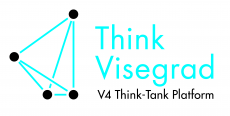Visit visegrad.group for the current website.

| Tue | Wed | Thu | Fri | Sat |
|---|---|---|---|---|
| 1 | 3 | 5 | 6 | 8 |
| Tue | Wed | Thu | Fri | Sat |
|---|---|---|---|---|
| 6 | 5 | 8 | 8 | 9 |
| Tue | Wed | Thu | Fri | Sat |
|---|---|---|---|---|
| 8 | 6 | 7 | 8 | 8 |
| Tue | Wed | Thu | Fri | Sat |
|---|---|---|---|---|
| 6 | 6 | 6 | 9 | 8 |
Visegrad Group Defence Cooperation
Brief History of V4 Defence Cooperation
Since the very beginning, the efforts to develop and strengthen regional cooperation in the military and defence fields have been in the heart of Visegrad cooperation. It has provided a platform for political consultations on security and defence related topics with the focus on enhancing cooperation in various areas of common interests such as harmonization of defence policy objectives, defence capability development, interoperability of the V4 armed forces and defence industry.
However, the main focus of V4 defence cooperation has changed over the past decades. At the beginning, the European and Euro-Atlantic integration of the V4 countries enjoyed the highest priority. When the integration process was fully completed in 2004, the focus shifted to joint projects and activities in the framework of NATO and the EU with the aim of contributing to the European and Euro-Atlantic security.
V4 defence cooperation reached a significant milestone in 2014, when V4 Ministers of Defence signed the first V4 defence cooperation strategy entitled Long Term Vision of the Visegrad Countries on Deepening their Defence Cooperation. In the Long Term Vision, V4 countries committed themselves to strengthening European and transatlantic defence capabilities by deepening their defence cooperation, and stipulated the following three critical areas of practical cooperation:
- capability development, procurement and defence industry,
- establishment of multinational units and running cross border activities,
- education, training and exercises.
Due to substantial changes in the European and Euro-Atlantic security environment, V4 countries decided to revise their defence cooperation strategy in 2019. V4 Ministers of Defence adopted the revised strategy entitled Long Term Vision of the Visegrad Countries on their Defence Cooperation on June 24, 2020. In the revised document, they reaffirmed their common interest in further developing the V4 defence cooperation and agreed the following four priority areas:
- establishing multinational formations and contributing to multinational forces and initiatives,
- harmonizing defence planning and capability development,
- improving joint education, training and exercises to enhance interoperability,
- cooperating with partners.
To facilitate the implementation of the Long Term Vision, multi-year Action Plans have been elaborated which translate the long term priority objectives of V4 defence cooperation into concrete projects and initiatives. The Action Plans contain the concrete joint projects’ and initiatives’ main objectives, tasks, actions and target dates to guide V4 defence cooperation. The latest version of the Action Plan (last updated in November 2022) identified the following specific areas of V4 defence cooperation:
- Strengthening NATO’s deterrence and defence,
- Exploring possibilities of V4 cooperation with regards to the conflict in Ukraine and the post-war reconstruction,
- Common training and exercise,
- Enablement of SACEUR’s Area of Responsibility,
- Common Security and Defence Policy (CSDP) initiatives,
- V4 EU Battlegroup (BG),
- Defence planning and capability development,
- Defence industry, innovation, procurement and armaments,
- Military health service,
- Countering hybrid threats,
- Cyber domain,
- Transformation,
- Emerging and disruptive technologies (EDT),
- Territorial defence forces,
- Arms control,
- Special operations forces (SOF),
- Military Police,
- Strategic Communications (StratCom),
- Social, cultural and human resources aspects of defence cooperation.
Areas of the Cooperation
Since the adoption of the first Long Term Vision, V4 countries have substantially expanded their defence cooperation and implemented joint projects and activities in many areas stipulated in the document.
The regular formation of the V4 EU Battlegroup (BG) is one of the most important and visible results of V4 defence cooperation. Beside contributing to the EU’s rapid response capabilities, it strengthens interoperability and military interaction among the V4 countries. Until now, it has been set up twice, in first semester of 2016 and in second half of 2019, with Poland being the framework nation. The third stand-by period of the V4 EU BG will take place in the first semester of 2023. The V4 EU BG has also contributed to strengthening cooperation with other countries in the region by providing the opportunity to join. The V4 EU BG was reinforced by Ukraine in 2016 and by Croatia in 2019. In 2023, the V4 EU BG will be reinforced by Croatia, Latvia and Lithuania and its capability was certified at an international military exercise PUMA 22 in November 2022.
The establishment of the V4 Joint Logistics Support Group Headquarters (JLSG HQ) is another flagship project of the V4 military cooperation led by Poland and with the equal participation of the Visegrad countries. It is a stand-alone C2-element at tactical level to provide C2 & coordination for all theatre-level logistics. As the V4 countries’ first common NATO Capability Target, the JLSG HQ is a tangible contribution to the security of the Alliance. The V4 JLSG HQ reached its Initial Operational Capability on 1st January 2020, and the Full Operational Capability was certified at the V4 JLSG eCPX VV22 exercise in Opole, Poland.
Common trainings and exercises are also key elements of V4 defence cooperation which are guided by the V4 Training and Exercise Strategy (last updated in May 2021). Common trainings and exercises contribute to improving interoperability and operational readiness among the V4 armed forces which is fundamental to our contribution to NATO and EU defence initiatives. The V4 Training, Education and Exercise Synchronization Conferences (V4 TEESC) are bi-annually organized to provide a forum for the coordination of joint training and exercise activities. The V4 Midterm Training and Exercise Plan (V4 MTEP) covering the offered V4 exercises of the next 5 years as well as the V4 Individual Training Catalogue containing individual courses and training opportunities opened for V4 for next 2 years are updated every year. Each year one of the exercises included in the V4 MTEP is designated to V4 Main Exercise, where V4 countries contribute with significant capabilities.
The better harmonization of capability development and procurement are further major areas of cooperation. To boost the identification of promising areas of V4 defence cooperation, V4 countries created the Framework for an Enhanced Visegrád Defence Planning Cooperation in 2014. Based on the Framework, the V4 Planning Group has been established and tasked to select the most promising areas of cooperation and channel them into the respective national planning processes. The V4 countries conducted a revision of the Framework, which was adopted in November 2022. V4 armaments cooperation reached a milestone in 2022 when the first joint V4 ammunition procurement project has come to an implementation phase and the first amount of the procured ammunition was delivered to the Armed Forces of the V4 countries. Building on the experiences of the first joint procurement, V4 countries aim at identifying further opportunities of armaments cooperation. Further cooperation in this area will be guided by the principles of the "Concept for the Common V4 Defence Industry Strategy", which is currently under preparation.
Last but not least, the Visegrad Group is dedicated to building partnerships with other countries in the V4+ format, which offers added value to the regional stability. These partnerships involve cooperation with the Central European Defence Cooperation (CEDC) countries, France, Germany, the Republic of Korea and the United Kingdom.
Cooperation Mechanism and Working Formats
V4 defence cooperation has well-established working formats both in the high- and the expert-level. The highest strategic-level decision-making body is the meeting of Defence Ministers. Besides, there are other high-level formats of defence cooperation, which are the following:
- Senior Body (Deputy Ministers of Defence or State Secretaries for Defence),
- Defence Policy Directors,
- Chiefs of Defence,
- National Armaments Directors.
The rotating V4 Presidencies have a crucial role in maintaining the momentum of V4 defence cooperation, among others, by organising and chairing the meetings of the high- and expert-level formats.
- Long Term Vision of Visegrad Countries on Their Defence Defence Cooperation (Prague, June 24, 2020)
- Long Term Vision of the Visegrad Countries on Depening their Defence Cooperation (Visegrád, March 14, 2014)
- Framework for an Enhanced Visegrad Group Defence Planning Cooperation [PDF] (Pezinok, November 9, 2022)
Useful Links:







